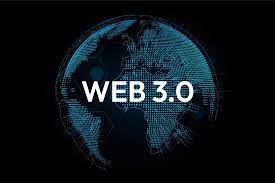There are several examples of Web3 applications and platforms that showcase the potential of decentralized technologies. Here are a few notable examples:
- Ethereum (Blockchain Platform): Ethereum is a decentralized blockchain platform that enables the development of smart contracts and decentralized applications (dApps). It provides a robust infrastructure for building various Web3 applications, including decentralized finance (DeFi) platforms, non-fungible token (NFT) marketplaces, decentralized exchanges (DEXs), and more.
- Uniswap (Decentralized Exchange): Uniswap is a decentralized exchange protocol built on Ethereum. It allows users to trade ERC-20 tokens directly from their wallets without requiring a centralized intermediary. Uniswap utilizes automated market-making (AMM) algorithms and liquidity pools, enabling decentralized and permissionless token swaps.
- Filecoin (Decentralized Storage): Filecoin is a decentralized storage network that utilizes blockchain technology to create a marketplace for storage providers and consumers. It enables users to store and retrieve data in a decentralized manner, incentivizing storage providers with Filecoin tokens. Filecoin aims to provide secure, reliable, and censorship-resistant storage solutions.
- Brave Browser (Privacy-Focused Browser): Brave is a privacy-focused web browser that integrates Web3 technologies. It blocks unwanted ads and trackers by default, and it allows users to opt-in to view privacy-respecting advertisements and earn Basic Attention Tokens (BAT) as rewards. Brave also supports decentralized applications and provides a seamless Web3 browsing experience.
- Augur (Decentralized Prediction Market): Augur is a decentralized prediction market platform built on Ethereum. It allows users to create and participate in prediction markets, where users can bet on the outcome of future events. Augur leverages the wisdom of the crowd and blockchain technology to create a decentralized and transparent prediction market ecosystem.
- OpenSea (NFT Marketplace): OpenSea is a decentralized marketplace for buying, selling, and trading non-fungible tokens (NFTs). It supports a wide range of NFTs, including digital art, collectibles, virtual real estate, and more. OpenSea provides a platform for creators and collectors to engage in peer-to-peer NFT transactions.
- Golem (Decentralized Computing): Golem is a decentralized computing platform that enables users to share and monetize their computing resources. It creates a global marketplace for idle computing power, allowing users to rent out their resources or utilize them for computationally intensive tasks. Golem aims to build a decentralized and cost-effective cloud computing network.
There are several examples of Web3 applications and platforms that showcase the potential of decentralized technologies. Here are a few examples:
- Ethereum: Ethereum is a decentralized platform that enables the development and execution of smart contracts. It allows developers to build decentralized applications (dApps) on top of its blockchain, enabling a wide range of use cases, including decentralized finance (DeFi), non-fungible tokens (NFTs), and decentralized social networks.
- Filecoin: Filecoin is a decentralized storage network that allows users to rent out their unused storage space and earn Filecoin cryptocurrency in return. It aims to create a decentralized and secure storage infrastructure by leveraging blockchain technology.
- Brave Browser: Brave is a privacy-focused web browser that incorporates blockchain technology to improve user privacy and reward content creators. It allows users to opt into a privacy-respecting advertising system and earn Basic Attention Tokens (BAT) for viewing ads, which they can then use to support their favorite content creators.
- Uniswap: Uniswap is a decentralized exchange (DEX) built on the Ethereum blockchain. It allows users to trade cryptocurrencies directly from their wallets without the need for intermediaries or order books. Uniswap uses automated market making algorithms and liquidity pools to facilitate decentralized trading.
- OpenSea: OpenSea is a decentralized marketplace for buying, selling, and trading NFTs. It provides a platform for creators and collectors to engage in peer-to-peer transactions for digital assets, such as digital art, virtual land, and in-game items.
- IPFS (InterPlanetary File System): IPFS is a peer-to-peer network protocol that aims to create a distributed and decentralized web. It allows users to store and retrieve data using a content-addressable system, ensuring content availability even if individual nodes go offline.
- Golem: Golem is a decentralized computing network that allows users to rent out their computing power or request computing tasks from the network. It enables distributed and cost-effective computing for tasks such as rendering, scientific calculations, and machine learning.
These are just a few examples of the many innovative applications and platforms that are being built on Web3 technologies. The Web3 ecosystem is constantly evolving, and we can expect to see more decentralized applications and platforms emerging in the future.
SHARE
